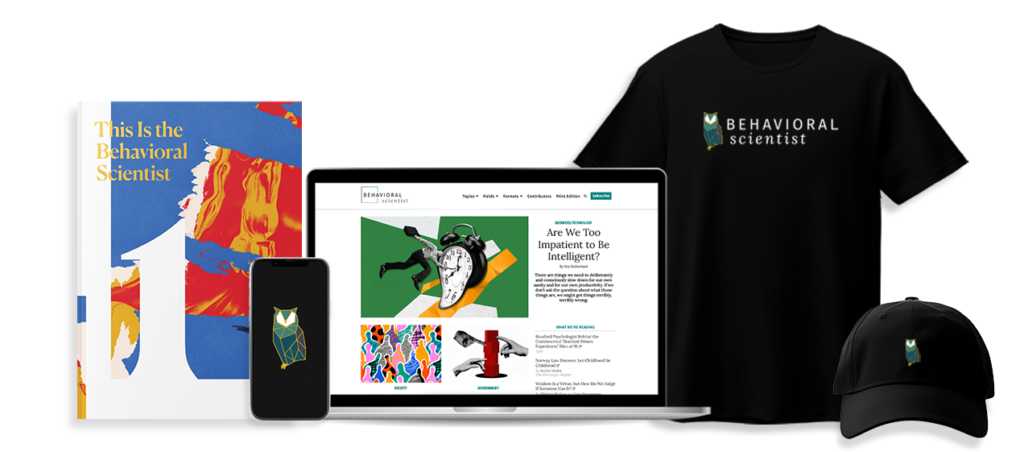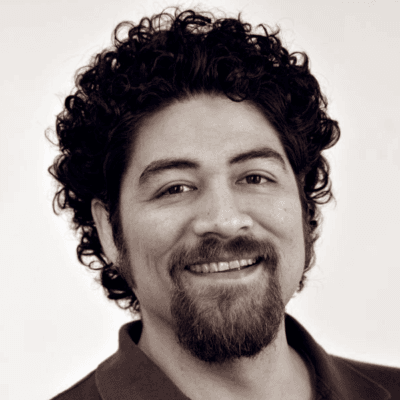Listening to my mother’s grumbled complaints taught me as much about social policy as any public administration class. Growing up, my mother sometimes had to drag me to appointments with social service agencies. After the meetings, I remember she’d exasperatedly ask things like “If they want us off welfare, why aren’t we allowed to save more than $1,000?” It was a fair question—how could we get off public benefits without being able to save for tuition, a reliable car, a rainy day, or much of anything else?
As a kid, I got to know poverty’s effects intimately. As an adult, I’ve spent my entire career fighting poverty, first in child welfare and, since 2013, in applied behavioral science.
As my professional focus changed in 2013, so did the set of tools I needed. I used to spend most of my time building rapport with teenagers and helping them navigate bureaucracies. Now, after almost a decade in behavioral science, I am more likely to navigate regression charts or build rapport with program administrators to figure out how we can randomize an intervention. Throughout all that work, one lesson keeps re-emerging: solving problems requires more than just having powerful tools, you also need people who can use them properly. When it comes to fighting poverty, people with lived experience are essential teammates if we want to maximize the impact of any anti-poverty work.
When it comes to fighting poverty, people with lived experience are essential teammates if we want to maximize the impact of any anti-poverty work.
To think about why our teams need lived experience (rather than merely having learned about it from others), let’s stipulate that good behavioral science research rests on sound mixed methods approaches, and therefore relies on good qualitative data from affected populations. Now, imagine the efficiency that can come from having people from those affected populations leading the formation of research questions and leading subsequent fieldwork. Having lived experience on your team means that your research tools will be used more effectively, especially if that lived experience shapes your work throughout, and not just in user-testing sessions once you have cooked up an intervention idea. The tacit knowledge derived from lived experience is a tool that can allow behavioral science teams to ask better questions, in a savvier way, earlier in the process.
Rather than spending a bunch of energy learning about the affective aspects of SNAP participation, I can tell you about how embarrassed I was as a kid to use food stamps. Being handed a few brown-on-beige “Food Coupons” meant that I’d cringe pre-emptively as I trudged down Old Colony Ave in Southie, the whole time envisioning myself dragging a carton of milk up to the cashier and hoping I wouldn’t have to face anyone but him when I pulled out the crumpled wad to pay with something other than real money. And while EBT cards have replaced those food stamps with a less conspicuous payment method, the stigma of using benefits in retail environments certainly hasn’t gone anywhere, nor has the desire of SNAP recipients to preserve their pride. Wouldn’t you want that kind of environmental awareness built into a design process meant to affect the efficacy of a food supplementation program? And if so, why isn’t this kind of knowledge seen as a necessary prerequisite to behavioral design in the same way as quantitative analysis skills?
I’ve often wondered what would have happened without my own lived experience in the room at work. In a project with a public benefits agency, a state-level leader was worried that resending an eligibility form would encourage moral hazard. I helped convinced him to move forward with the project by painting a compassionate (firsthand) picture of the stress that many SNAP recipients are under. In a project on college completion, I told my teams about how I completed my bachelor’s in five years, because (like many first-gen students) I misunderstood that a “full-time” enrollment of 12 credits wouldn’t let you finish in four years. And I have lost count of the number of instances where I reminded someone that treating the “Latino” or “Hispanic” community as a monolith is a grave error. In all these instances, the work was improved because of tacit knowledge from lived experience.
The tacit knowledge derived from lived experience is a tool that can allow behavioral science teams to ask better questions, in a savvier way, earlier in the process.
But perhaps more importantly, these projects could have gone totally off the rails if we’d brought in lived expertise at a later moment. Having a teammate with lived experience cannot substitute for good (and current) contextual reconnaissance, but it can help teams come up with better insights more quickly. Importantly, it can also help avoid obvious mistakes made by teams composed completely of outsiders. And all of that should add up to better solutions.
Demanding more diverse teams is not a new phenomenon, nor is the admonition to value lived experience. But if all you do is hire differently, you’re only getting partway there. To effectively incorporate lived experience into behavioral design, we also have to address the work environment. It’s both tiring and perilous to be the only person with this kind of knowledge on a team.
Think about the kinds of questions you have to grapple with internally as you navigate your work from day to day. Do you risk tarnishing the veneer of being “objectively” engaged in science if you reveal your lived experience in a meeting with partners or funders? Or even your own teammates? As a supervisor, will you undermine your authority with your team if you overrule their design choices based on your lived experience? Even as a senior member of your organization, how much political capital are you willing or able to spend responding to every slight or insult? And do you respond differently if the insult was simple ignorance versus something more hostile? And how would you even know the difference?
Why isn’t this kind of knowledge seen as a necessary prerequisite to behavioral design in the same way as quantitative analysis skills?
As you might imagine (and as some of you already know), having to process those types of questions before you even open your mouth is cognitively and emotionally taxing. All of those stakes are raised when you do decide to leverage your lived expertise. When you speak from your unique individual experience on behalf of a vast and heterogenous array of other people, being “right” is extraordinarily difficult, even as the pressure to be right is enormous.
So that brings me back to the field of behavioral science needing more folks with lived expertise. We could avoid so many of the difficulties I have described above if the world of applied behavioral science were simply more representative of the world outside: the full gamut of socioeconomic and educational backgrounds, the whole spectrum of gender expression and sexual orientation, the entire array of racial and ethnic identities. Imagine how much better our collective output would be if folks like me weren’t squandering our cognitive resources on thinking about how to navigate this stuff. Imagine how much better our insights would be if there were a wider assortment of experiences to rely on. Imagine the different kinds of interventions we might design if our teams were more intimately familiar with the problems we are trying to solve. I think we’d all be better off.
A small example: during my time at ideas42, we started team affinity groups, including one for folks who have experienced poverty. Simply having the space to talk about our shared experiences created a new sense of belonging for our members, and led us to work on internal projects that could help teammates beyond the group, including creating user-friendly guidance on navigating mental health benefits. Unfortunately, our group also revealed an uncomfortable truth—in an organization with more than 100 employees, fewer than ten of us joined a group to support folks who’d experienced hardship firsthand. I wish that poverty itself were that rare out in the world.
Imagine the different kinds of interventions we might design if our teams were more intimately familiar with the problems we are trying to solve. I think we’d all be better off.
I am delighted that we are in a historical moment that is acceding to long-standing demands for people with diverse experiences to have more of a say in organizations and power structures, behavioral science included. This is beyond overdue. While we are at it, let’s use our behavioral savvy to be sure that the room these folks are invited into is comfortable for everyone to inhabit. We need to recruit people with diverse backgrounds and experiences, including their academic training, but we also need to attend to psychological safety and belonging in the workplace. This can start by making folks with lived experience more visible (senior representation is great for this). We also have to start shifting our narratives about what constitutes knowledge: as long as we treat quantitative and theoretical insights as more important than qualitative and lived insights, we will never live up to the promise of impact that attracts so many of us to this work.
The COVID crisis convinced more people in power that they need to listen to what traditionally marginalized populations have to say. The uprisings for racial justice in the summer of 2020 deepened that conviction for many. This is undoubtedly good, but it also comes at a cost: many of us with lived experience—of poverty, racism, xenophobia, misogyny, and more—are now exhausted from trying to maximize this moment of attention from the powers that be, especially when we are the only ones to shoulder the load. We have to invite a more diverse set of people into the world of applied behavioral science, and we must make sure that the world we invite them into is one in which they can thrive.
Disclosure: Anthony Barrows previously worked for ideas42, which provides financial support to Behavioral Scientist as a Founding Partner. Founding Partners do not play a role in the editorial decisions of the magazine.






